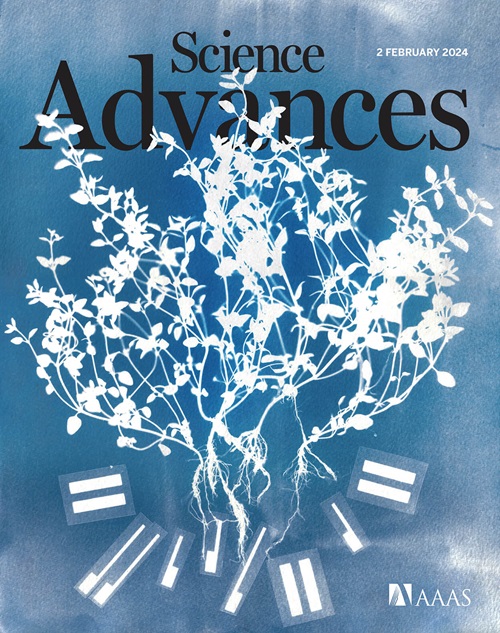TNIK: A redox sensor in endothelial cell permeability
IF 12.5
1区 综合性期刊
Q1 MULTIDISCIPLINARY SCIENCES
引用次数: 0
Abstract
Dysregulation of endothelial barrier integrity can lead to vascular leak and potentially fatal oedema. TNF-α controls endothelial permeability during inflammation and requires the actin organizing Ezrin-Radixin-Moesin (ERM) proteins. We identified TRAF2 and NCK-interacting kinase (TNIK) as a kinase directly phosphorylating and activating ERM, specifically at the plasma membrane of primary human endothelial cells. TNIK mediates TNF-α–dependent cellular stiffness and paracellular gap formation in vitro and is essential in driving inflammatory oedema formation in vivo. Unlike its homologs, TNIK activity is negatively and reversibly regulated by H2O2-mediated oxidation of C202 within the kinase domain. TNIK oxidation results in intermolecular disulfide bond formation and loss of kinase activity. Pharmacologic inhibition of endogenous reactive oxygen species production in endothelial cells elevated TNIK-dependent ERM phosphorylation, endothelial cell contraction, and cell rounding. Together, we highlight an interplay between TNIK, ERM phosphorylation, and redox signalling in regulating TNF-induced endothelial cell permeability.

TNIK:内皮细胞通透性中的氧化还原传感器
内皮屏障完整性失调可导致血管泄漏和潜在的致命性水肿。TNF-α在炎症期间控制内皮通透性,并需要肌动蛋白组织Ezrin-Radixin-Moesin (ERM)蛋白。我们发现TRAF2和nck相互作用激酶(TNIK)是一种直接磷酸化和激活ERM的激酶,特别是在原代人内皮细胞的质膜上。TNIK在体外介导TNF-α依赖性的细胞僵硬和细胞旁间隙的形成,在体内驱动炎性水肿的形成是必不可少的。与它的同源物不同,TNIK的活性受到h2o2介导的激酶结构域内C202氧化的负可逆调节。TNIK氧化导致分子间二硫键的形成和激酶活性的丧失。内皮细胞内源性活性氧产生的药理学抑制可提高tnik依赖性ERM磷酸化、内皮细胞收缩和细胞圆缩。总之,我们强调了TNIK、ERM磷酸化和氧化还原信号在调节tnf诱导的内皮细胞通透性中的相互作用。
本文章由计算机程序翻译,如有差异,请以英文原文为准。
求助全文
约1分钟内获得全文
求助全文
来源期刊

Science Advances
综合性期刊-综合性期刊
CiteScore
21.40
自引率
1.50%
发文量
1937
审稿时长
29 weeks
期刊介绍:
Science Advances, an open-access journal by AAAS, publishes impactful research in diverse scientific areas. It aims for fair, fast, and expert peer review, providing freely accessible research to readers. Led by distinguished scientists, the journal supports AAAS's mission by extending Science magazine's capacity to identify and promote significant advances. Evolving digital publishing technologies play a crucial role in advancing AAAS's global mission for science communication and benefitting humankind.
 求助内容:
求助内容: 应助结果提醒方式:
应助结果提醒方式:


